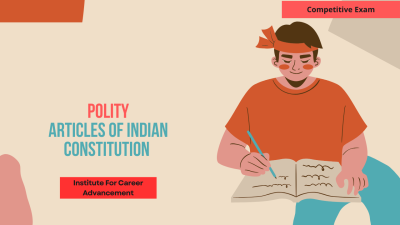Course description
The Era of Militant Nationalism in India was a defining period in the struggle for independence, spanning the late 19th and early 20th centuries. This course explores the rise of militant nationalism in response to British colonial policies, the failure of moderate approaches, and the growing desire for a more assertive path to self-rule. It focuses on the key leaders, movements, and events that marked this period and examines the strategies adopted by radical nationalists to challenge British authority. The course will highlight the political, social, and cultural shifts that occurred as India moved from moderate constitutionalism to direct action and revolutionary movements, ultimately contributing to the larger national freedom struggle.
Key Topics:
1. Introduction to Indian Nationalism:
Overview of early Indian nationalism and the role of Indian National Congress (INC).
The shift from moderate to militant nationalism and the underlying reasons for this transformation.
2. The Rise of Militant Nationalist Leaders:
Study of influential leaders like Bal Gangadhar Tilak, Lala Lajpat Rai, Bipin Chandra Pal, and Subhas Chandra Bose who adopted more radical methods of protest.
Exploration of their ideologies and contributions to the nationalist movement.
3. The Role of the Swadeshi Movement (1905):
Examination of the Swadeshi Movement sparked by the Partition of Bengal in 1905.
Focus on the boycott of British goods, promotion of indigenous industries, and the role of students, women, and workers in this movement.
4. The Ghadar Party and Revolutionary Nationalism:
Study of the Ghadar Party, its formation, goals, and the efforts of Indian expatriates to overthrow British rule through armed revolt.
Key events like the Ghadar Conspiracy and the role of Baba Gurdit Singh and others in organizing revolutionary activities.
5. Role of Terrorism and Revolutionary Activities:
Analysis of the rise of terrorist organizations like the Anushilan Samiti and Jugantar, and the increasing resort to violence and bombings to challenge British authority.
Discussion of the motivations, strategies, and outcomes of revolutionary acts such as the Alipore Bomb Case and the Jallianwala Bagh massacre.
6. Radicalism in the Indian National Congress:
The shift within the Indian National Congress from moderate leaders like Gopal Krishna Gokhale and Dadabhai Naoroji to more radical leaders like Tilak, who advocated for self-rule through direct action.
The Lucknow Pact (1916) and its role in bridging the gap between the Congress and the Muslim League, marking a phase of collaboration for the broader nationalist cause.
7. British Repression and Its Impact:
Exploration of how British policies, including repressive measures like the Rowlatt Act and martial law, triggered greater resentment and militancy among Indian nationalists.
The rise of mass movements against these repressive laws and the broader response to British colonialism.
8. Militant Nationalism and the Road to Independence:
The influence of militant nationalism on the broader Indian independence movement.
How radical ideas and actions laid the groundwork for later movements like the Non-Cooperation Movement and Civil Disobedience Movement.
9. Legacy of the Era of Militant Nationalism:
Assessment of the legacy of militant nationalism in shaping India’s freedom struggle.
How the revolutionary zeal and radical ideas contributed to both the political and cultural transformation of India, ultimately leading to independence in 1947.
19 শতকের শেষের দিকে এবং 20 শতকের গোড়ার দিকে ভারতের স্বাধীনতা সংগ্রামে উগ্র জাতীয়তাবাদের যুগ একটি সংজ্ঞায়িত সময় ছিল। এই কোর্সটি ব্রিটিশ ঔপনিবেশিক নীতির প্রতিক্রিয়ায় জঙ্গি জাতীয়তাবাদের উত্থান, মধ্যপন্থী পদ্ধতির ব্যর্থতা এবং স্ব-শাসনের আরও দৃঢ় পথের জন্য ক্রমবর্ধমান আকাঙ্ক্ষার অন্বেষণ করে। এটি এই সময়কে চিহ্নিত করা মূল নেতা, আন্দোলন এবং ঘটনাগুলির উপর দৃষ্টি নিবদ্ধ করে এবং ব্রিটিশ কর্তৃত্বকে চ্যালেঞ্জ জানাতে উগ্র জাতীয়তাবাদীদের দ্বারা গৃহীত কৌশলগুলি পরীক্ষা করে। এই কোর্সে ভারত যখন মধ্যপন্থী সংবিধানবাদ থেকে প্রত্যক্ষ কর্ম ও বিপ্লবী আন্দোলনে চলে যায়, এবং বৃহত্তর জাতীয় স্বাধীনতা সংগ্রামে অবদান রাখে, তখন যে রাজনৈতিক, সামাজিক ও সাংস্কৃতিক পরিবর্তন ঘটেছিল, তা তুলে ধরা হবে।
মূল বিষয়ঃ
1টি। ভারতীয় জাতীয়তাবাদের পরিচিতিঃ
প্রারম্ভিক ভারতীয় জাতীয়তাবাদ এবং ভারতীয় জাতীয় কংগ্রেসের (আইএনসি) ভূমিকার সংক্ষিপ্ত বিবরণ
মধ্যপন্থী থেকে জঙ্গি জাতীয়তাবাদে পরিবর্তন এবং এই রূপান্তরের অন্তর্নিহিত কারণ।
2. জঙ্গি জাতীয়তাবাদী নেতাদের উত্থানঃ
বাল গঙ্গাধর তিলক, লালা লাজপত রাই, বিপিন চন্দ্র পাল এবং সুভাষ চন্দ্র বসুর মতো প্রভাবশালী নেতাদের অধ্যয়ন যারা প্রতিবাদের আরও মৌলবাদী পদ্ধতি গ্রহণ করেছিলেন।
জাতীয়তাবাদী আন্দোলনে তাঁদের মতাদর্শ ও অবদানের অন্বেষণ।
3. স্বদেশী আন্দোলনের ভূমিকা (1905)
1905 সালে বঙ্গভঙ্গের ফলে উদ্ভূত স্বদেশী আন্দোলনের পরীক্ষা।
ব্রিটিশ পণ্য বর্জন, দেশীয় শিল্পের প্রচার এবং এই আন্দোলনে ছাত্র, মহিলা ও শ্রমিকদের ভূমিকার দিকে মনোনিবেশ করুন।
4. গদর পার্টি এবং বিপ্লবী জাতীয়তাবাদঃ
গদর পার্টি, এর গঠন, লক্ষ্য এবং সশস্ত্র বিদ্রোহের মাধ্যমে ব্রিটিশ শাসন উৎখাতের জন্য ভারতীয় প্রবাসীদের প্রচেষ্টার অধ্যয়ন।
গদর ষড়যন্ত্র এবং বিপ্লবী কার্যক্রম সংগঠিত করার ক্ষেত্রে বাবা গুরদিত সিং এবং অন্যান্যদের ভূমিকার মতো মূল ঘটনাগুলি।
5. সন্ত্রাসবাদ ও বিপ্লবী কার্যকলাপের ভূমিকাঃ
অনুশীলন সমিতি ও যুগান্তরের মতো সন্ত্রাসবাদী সংগঠনের উত্থান এবং ব্রিটিশ কর্তৃপক্ষকে চ্যালেঞ্জ জানাতে ক্রমবর্ধমান সহিংসতা ও বোমা হামলার বিশ্লেষণ।
আলিপুর বোমা মামলা এবং জালিয়ানওয়ালাবাগ গণহত্যার মতো বিপ্লবী কাজের প্রেরণা, কৌশল এবং ফলাফল নিয়ে আলোচনা।
6টি। ভারতীয় জাতীয় কংগ্রেসে মৌলবাদঃ
ভারতীয় জাতীয় কংগ্রেসের মধ্যে গোপাল কৃষ্ণ গোখলে এবং দাদাভাই নওরোজির মতো মধ্যপন্থী নেতাদের থেকে তিলক-এর মতো আরও উগ্রপন্থী নেতাদের মধ্যে পরিবর্তন, যারা সরাসরি পদক্ষেপের মাধ্যমে স্বায়ত্তশাসনের পক্ষে ছিলেন।
লখনউ চুক্তি (1916) এবং কংগ্রেস ও মুসলিম লীগের মধ্যে ব্যবধান কমাতে এর ভূমিকা, বৃহত্তর জাতীয়তাবাদী উদ্দেশ্যের জন্য সহযোগিতার একটি পর্যায়কে চিহ্নিত করে।
7. ব্রিটিশ দমন এবং এর প্রভাবঃ
রাওলাত আইন ও সামরিক আইনের মতো দমনমূলক পদক্ষেপ সহ ব্রিটিশ নীতিগুলি কীভাবে ভারতীয় জাতীয়তাবাদীদের মধ্যে আরও বেশি অসন্তোষ ও জঙ্গিবাদের সূত্রপাত করেছিল তার অন্বেষণ।
এই দমনমূলক আইনের বিরুদ্ধে গণআন্দোলনের উত্থান এবং ব্রিটিশ উপনিবেশবাদের প্রতি বৃহত্তর প্রতিক্রিয়া।
8. উগ্র জাতীয়তাবাদ এবং স্বাধীনতার পথঃ
বৃহত্তর ভারতীয় স্বাধীনতা আন্দোলনে জঙ্গি জাতীয়তাবাদের প্রভাব।
কীভাবে মৌলবাদী ধারণাগুলি এবং কর্মগুলি অসহযোগ আন্দোলন এবং আইন অমান্য আন্দোলনের মতো পরবর্তী আন্দোলনের ভিত্তি স্থাপন করেছিল।
9টি। জঙ্গি জাতীয়তাবাদের যুগের উত্তরাধিকারঃ
ভারতের স্বাধীনতা সংগ্রামকে রূপ দেওয়ার ক্ষেত্রে জঙ্গি জাতীয়তাবাদের উত্তরাধিকারের মূল্যায়ন।
কীভাবে বিপ্লবী উদ্যোগ এবং মৌলবাদী ধারণাগুলি ভারতের রাজনৈতিক ও সাংস্কৃতিক উভয় রূপান্তরের ক্ষেত্রেই অবদান রেখেছিল, যা শেষ পর্যন্ত 1947 সালে স্বাধীনতার দিকে পরিচালিত করেছিল।



















